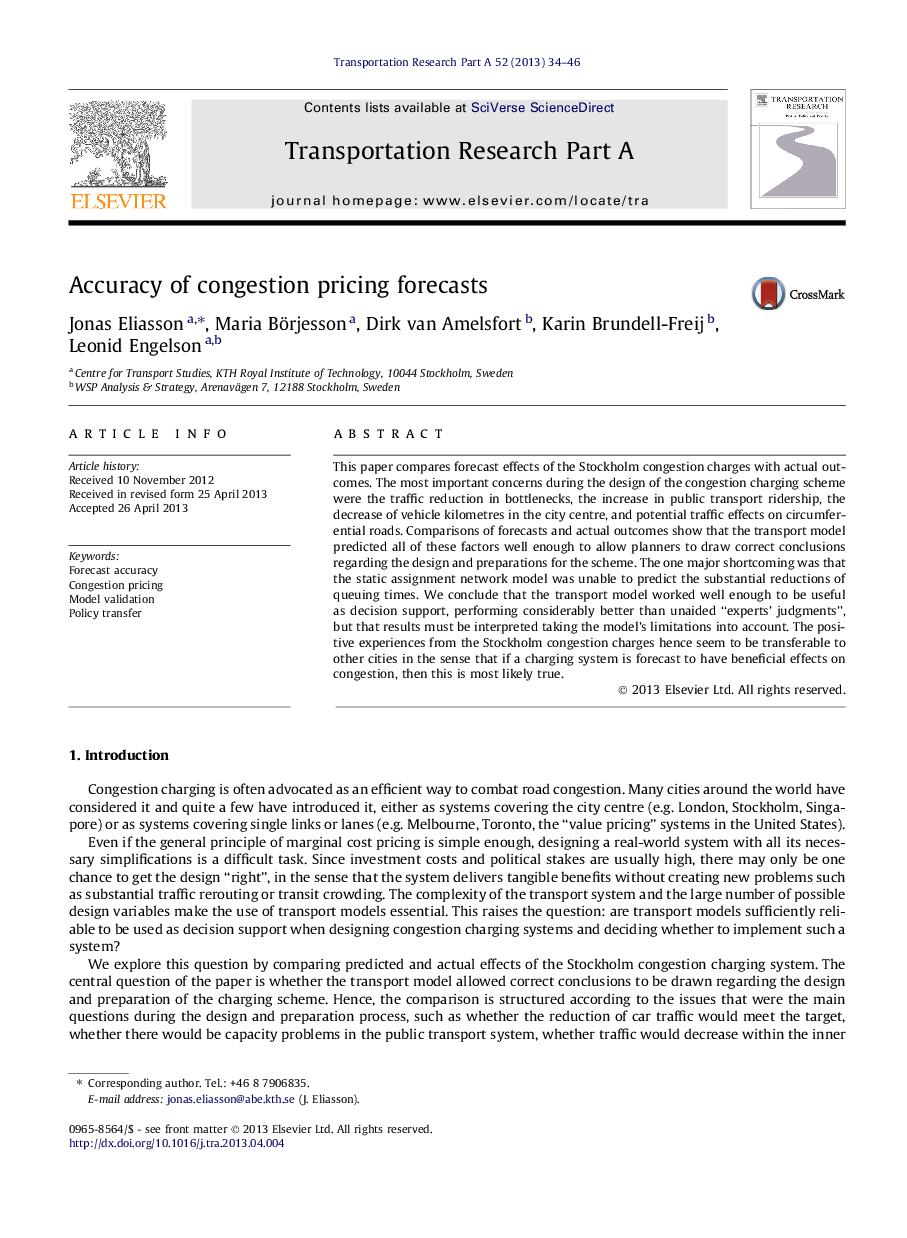| Article ID | Journal | Published Year | Pages | File Type |
|---|---|---|---|---|
| 310451 | Transportation Research Part A: Policy and Practice | 2013 | 13 Pages |
•Forecasted effects of the Stockholm congestion charges are compared with actual outcomes.•Most effects were predicted well enough to allow planners to draw correct conclusions.•The static assignment network model underestimated the reduction of queuing times.•This has implications for the transferability of the Stockholm experiences to other cities.
This paper compares forecast effects of the Stockholm congestion charges with actual outcomes. The most important concerns during the design of the congestion charging scheme were the traffic reduction in bottlenecks, the increase in public transport ridership, the decrease of vehicle kilometres in the city centre, and potential traffic effects on circumferential roads. Comparisons of forecasts and actual outcomes show that the transport model predicted all of these factors well enough to allow planners to draw correct conclusions regarding the design and preparations for the scheme. The one major shortcoming was that the static assignment network model was unable to predict the substantial reductions of queuing times. We conclude that the transport model worked well enough to be useful as decision support, performing considerably better than unaided “experts’ judgments”, but that results must be interpreted taking the model’s limitations into account. The positive experiences from the Stockholm congestion charges hence seem to be transferable to other cities in the sense that if a charging system is forecast to have beneficial effects on congestion, then this is most likely true.
